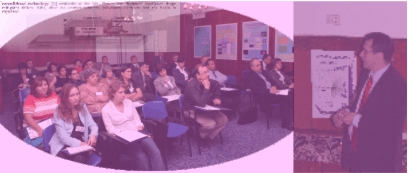
|
Invited papers CAS 2016
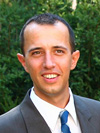 |
Hybrid CMOS/TFET circuits – Challenges and Perspectives
Costin Anghel, Institut Superieur d'Electronique de Paris (ISEP), Paris, France
In this presentation the challenges and perspectives in designing circuits for embedded systems with TFETs are introduced. The main differences between CMOS and TFET are discussed at device level. The impact that these differences have at circuit level is treated afterwards. Technology benchmarks like ring oscillators and SRAM cells are used to evaluate the performance of pristine TFET in terms of performance and power consumption. It is shown that TFETs are excellent devices for low stand-by power applications, however they are lower in speed with respect to CMOS. Different SRAM cells are introduced, explaining the benefits and the drawbacks for each cell. It is explained that a careful design of TFET-based SRAM cell can reduce the static leakage, while avoiding, at the same time, half-selection and write-disturb in the matrix. Finally, hybrid TFET/CMOS SRAM memory is proposed. The cells are designed using TFETs to reduce the leakage power in the memory array as compared to CMOS. Peripheral circuits are designed using FDSOI technology to increase speed and to reduce area as compared to full TFET based memories. Performance and stability of the memory is analyzed for different supply voltages to support dynamic voltage frequency scaling (DVFS). |
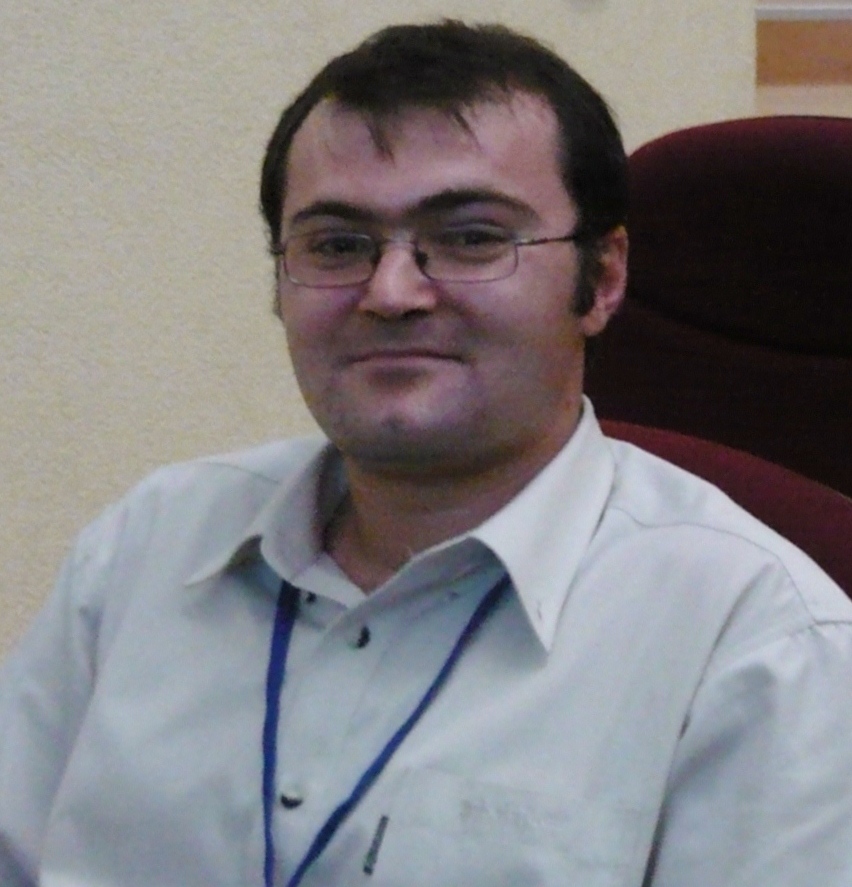 |
Complex arrays of one-dimensional nanostructures prepared by template-assisted electrochemistry
From nanofabrication toward next generation devices
Vlad-Andrei Antohe, Université catholique de Louvain, Institute of Condensed Mater and Nanosciences Louvain-la-Neuve, Belgium
The dense arrays of nanowires or nanotubes are expected to play an important role in the development of the next generation of nanostructured devices, as their high surface-to-volume ratio could be beneficial for a wide range of applications. However, the use of such one-dimensional nanostructures as functional building blocks within electronic devices requires specially tailored nanoarchitectures with well-defined patterns, positions and pitches.
In this context, several cost-effective pathways of preparing large dense arrays of nanowires or nanotubes, with easily tunable geometrical dimensions and spatial arrangement are discussed. The described fabrication approaches mostly rely on the template-assisted electrochemistry, eventually coupled with additional patterning protocols. The presented methods are extremely versatile and allows the design of a wide range of elongated nanostructures, including metallic, polymeric and hybrid core/shell nanowires or nanotubes, with great applicability in various fields, such as sensing and biosensing, energy storage and harvesting, or magnetic recording, only to mention a few. |
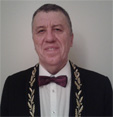 |
NOVEL MATERIALS FOR OXYGEN SENSING TECHNOLOGIES
Cornel Cobianu, Honeywell Romania
The paper reviews the state-of-the-art in oxygen sensing, focusing on low power technologies suitable for portable applications. Employment of novel materials in electrochemical, optical, acoustic and resistive oxygen sensing structures, substantiated by extensive theoretical considerations and experimental data, is discussed. Merits and drawbacks of each technology are presented, together with possible means of optimization. Future trends in the field are also discussed.
|
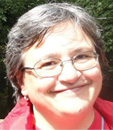 |
Quantum computing with graphene devices, Daniela Dragoman, University of Bucharest
Quantum computing is no longer a scientific curiosity but is rapidly becoming reality. However, present-day quantum processors are composed of superconducting qubits, which work at very low temperatures and require sophisticated read-out equipments. Therefore, a simple room-temperature quantum computing architecture is of considerable practical interest. Implementations of quantum logic gates and algorithms in nanostructures are only possible in the ballistic transport regime, where phase coherence is maintained throughout the device. As such, graphene recommends itself as a material in which quantum architectures can be implemented due to its very long mean free path at room temperature. The talk explores the proposed implementations in graphene of one-, two-, and three-qubit quantum logic gates as well as the Deutsch-Jozsa quantum algorithm. The proposed quantum computing configurations can be fabricated with existing nanotechnologies and involve only measurements of electrical currents as read-out procedures.
Quantum computing with graphene devices
Daniela Dragoman,
University of Bucharest
Quantum computing is no longer a scientific curiosity but is rapidly becoming reality. However, present-day quantum processors are composed of superconducting qubits, which work at very low temperatures and require sophisticated read-out equipments. Therefore, a simple room-temperature quantum computing architecture is of considerable practical interest. Implementations of quantum logic gates and algorithms in nanostructures are only possible in the ballistic transport regime, where phase coherence is maintained throughout the device. As such, graphene recommends itself as a material in which quantum architectures can be implemented due to its very long mean free path at room temperature. The talk explores the proposed implementations in graphene of one-, two-, and three-qubit quantum logic gates as well as the Deutsch-Jozsa quantum algorithm. The proposed quantum computing configurations can be fabricated with existing nanotechnologies and involve only measurements of electrical currents as read-out procedures.
|
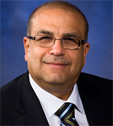 |
CMOS-MEMS Devices For Communication Systems and Nano-Instrumentations
Raafat Mansour, University of Waterloo, Ontario, Canada
This talk introduces a new class of devices and instrumentations that leverage the myriad economic benefits of having integrated systems with both electrical and mechanical functionality on a single-chip. This is enabled by a CMOS post-processing technique developed at the University of Waterloo to create MEMS devices within CMOS chips. We integrate actuation, sensing and control electronics on a single CMOS-chip. This unique chip-scaled technology platform enables the development of highly advanced devices for a wide range of applications including radio frequency (RF) communication systems and nano-instrumentations. The talk addresses, CMOS-MEMS integration. RF CMOS-MEMS devices such as switches, tunable filters and reconfigurable matching networks. It will also address the use of CMOS-MEMS technology in the realization of nano instrumentations such as atomic force microscopes (AFM) and scanning microwave microscopes (SMM) on a single CMOS chip. |
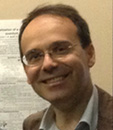 |
Spin-orbit optical phenomena
Lorenzo Marrucci,
Università di Napoli Federico II, Italy
The angular momentum of a light beam in the paraxial limit can be split into spin and orbital components (SAM and OAM). Only recently, several optical processes involving a conversion of angular momentum from one form to another or other kinds of spin-orbit couplings were conceived and experimentally demonstrated [1]. I will focus on the case of SAM-OAM coupling occurring in optical devices named q-plates [2], which have proved to be extremely convenient tools for controlling the OAM of light beams in the visible and near-infrared domains. A q-plate is based on a space-variant birefringent medium, typically a liquid crystal, whose optic axis is azimuthally patterned in the transverse plane with a topological singularity of integer or semi-integer charge q at the center. A number of applications of these devices have been demonstrated in classical photonics and in quantum optics during the last few years. In this presentation, I will review a selection of the recent applications of the q-plate [3-8]. Moreover, if time will allow it, I will discuss a conceptual extension of the q-plate working mechanism leading to the possibility of guiding light by using only the geometric phases arising in polarization manipulations [9].
References
- F. Cardano, L. Marrucci, Nature Photon. 9, 776-778 (2015)
- L. Marrucci, C. Manzo, D. Paparo, Phys. Rev. Lett. 96, 163905 (2006)
- T. Bauer et al., Science 347, 964-966 (2015)
- F. Cardano et al., Science Advances 1, e1500087 (2015)
- F. Cardano et al., Nature Comm. 7, 11439 (2016)
- G. J. Ruane et al., Optica 2, 147-150 (2015)
- D. Naidoo et al., Nature Photon. 10, 327-332 (2016)
- L. Yan et al., Optica 2, 900-903 (2015)
- S. Slussarenko, A. Alberucci, C. P. Jisha, B. Piccirillo, E. Santamato, G. Assanto, L. Marrucci, arXiv:1512.00816
horbitech (2010-2013) and is presently principal investigator of the ERC-advanced grant PHOSPhOR.
Spin-orbit optical phenomena
Lorenzo Marrucci
Universita di Napoli Federico II, Italy
The angular momentum of a light beam in the paraxial limit can be split into spin and orbital components (SAM and OAM). Only recently, several optical processes involving a conversion of angular momentum from one form to another or other kinds of spin-orbit couplings were conceived and experimentally demonstrated [1]. I will focus on the case of SAM-OAM coupling occurring in optical devices named q-plates [2], which have proved to be extremely convenient tools for controlling the OAM of light beams in the visible and near-infrared domains. A q-plate is based on a space-variant birefringent medium, typically a liquid crystal, whose optic axis is azimuthally patterned in the transverse plane with a topological singularity of integer or semi-integer charge q at the center. A number of applications of these devices have been demonstrated in classical photonics and in quantum optics during the last few years. In this presentation, I will review a selection of the recent applications of the q-plate [3-8]. Moreover, if time will allow it, I will discuss a conceptual extension of the q-plate working mechanism leading to the possibility of guiding light by using only the geometric phases arising in polarization manipulations [9].
References
[1] F. Cardano, L. Marrucci, Nature Photon. 9, 776-778 (2015)
[2] L. Marrucci, C. Manzo, D. Paparo, Phys. Rev. Lett. 96, 163905 (2006)
[3] T. Bauer et al., Science 347, 964-966 (2015)
[4] F. Cardano et al., Science Advances 1, e1500087 (2015)
[5] F. Cardano et al., Nature Comm. 7, 11439 (2016)
[6] G. J. Ruane et al., Optica 2, 147-150 (2015)
[7] D. Naidoo et al., Nature Photon. 10, 327-332 (2016)
[8] L. Yan et al., Optica 2, 900-903 (2015)
[9] S. Slussarenko, A. Alberucci, C. P. Jisha, B. Piccirillo, E. Santamato, G. Assanto, L. Marrucci, arXiv:1512.00816
horbitech (2010-2013) and is presently principal investigator of the ERC-advanced grant PHOSPhOR.
|
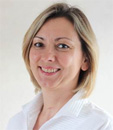 |
Advanced CMOS devices at scaled nodes
Anda Mocuta,
IMEC, Belgium
In recent years, planar MOS transistor scaling has been facing severe challenges. At 22nm and 14nm nodes the finFET architecture has extended the gate length and gate pitch scaling through marked improvement in short channel effects. However, with the relentless requirements of area scaling the finFET architecture may become insufficient to support further gate length reduction. At the same time, increasingly diverging requirements at system level make for interesting technology and device architecture choices. In this talk we will explore the transition from finFETs to gate-all-around (GAA) nanowires at advanced nodes. We will look at which architecture makes most sense for low power or high performance applications. And we will also assess some of the key process challenges for future nodes. In addition, we will also have a look at additional device architectures that may make sense at advanced nodes, and the effect of introducing high mobility materials. |
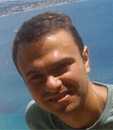 |
Design and optimization of tunable RF MEMS based filters in Surface Integrated Waveguide Technology
Andrei Muller, Institute of Telecommunications and Multimedia Applications (iTEAM) Valencia Spain
The paper will introduce very recently proposed lossy filter synthesis procedures and optimizations based on the coupling matrix. The synthesis procedures described are based on similarity transformations based on hyperbolic reflections while the optimization methods on an Eigenvalue approach.The optimization methods prove their benefits under constrained optimizations (when the user desires specific coupling matrix topologies and also constrained coefficients values) which should fit within the constraints of the desired technology.
In respect to the design and optimization the 3D Smith chart tool will be introcued and used for showing its benefits in the design steps of the filter. ( group delay, qulaity factor, alongside with other unprecedent visual tools)
On the technological level different examples of RF MEMS/ Surface Integrated Wavguide filters will be given and various practical issues will be briefly described.
The paper has its fundaments in papers published by the author under the aegis of IEEE MTT Society or Microwave Journal in 2016.
Andrei received the 2013 Telecommunications award of the Romanian Academy for the 3D Smith chart concept development (www.3dsmithchart.com) and serves since May 2016 as an Associate Editor for new award winning multidisciplinary Journal: IEEE ACCESS while being a Reviewer for IEEE Transactions and Circuits and Systems, IEEE Transactions on Circuits and Systems Express Briefs and Electronics Letters. Andrei is since May 2016 the Coordinator of Europe Middle East and Asia for IEEE Young Professionals: Microwave Section.
|
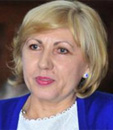 |
Implantable Technologies: Quo Vadis?
Ana Rusu,
KTH Royal Institute of Technology, Sweden
Implantable devices are no longer science fiction. In recent years, implantable technologies have attracted huge attention and research efforts have been intensified more than ever, mainly towards the development of new biomaterials, biosensors and bioelectronics. Research on implantable technologies is motivated by the continuous growth of their medical applications, such as pacemakers, drug pumps, heart probes, glucose monitoring and brain neural activity monitoring, as well as by their huge potential for Internet of Everything applications. Most of today implantable devices are challenged by the power consumption, which affects the size due to the required batteries and patient’s comfort due to materials, implantation procedure, and need of batteries’ replacement. In addition, implantable devices face many cross-disciplinary challenges, such as biocompatibility, integration, reliability, security, privacy, and safety.
The focus of this presentation is on ultra-low power operation and highly-efficient energy harvesting, storage and processing technologies for self-powered implantable devices. After a brief overview of the recent development and current trends in implantable technologies, examples of implantable devices will be given. The limits and challenges towards their implementation will be discussed and approaches to minimize the power consumption and form-factor will be presented. Furthermore, collaborative energy harvesting, storage and management solutions, which allow “implant and forget” devices, will be addressed. |
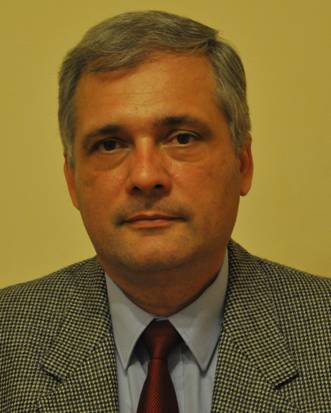 |
CRLH unit cells – the key for new topologies of distributed passive and active microwave devices and circuits
Stefan Simion,
Electronics and Communications Dept., Military Technical Academy, Bucharest, Romania
Giancarlo Bartolucci, Dept. of Electronics Engineering, University of Roma Tor Vergata, Roma, Italy
Recent applications of CRLH unit cells used to design distributed passive and active microwave devices and circuits are presented. In particular, new configurations for small-size passive devices based on quarter-wavelength transmission line sections, as well as microwave amplifiers, oscillators and frequency doublers are analyzed. The performances of these new circuit topologies are put into evidence numerically and the results are validated by experiments. |
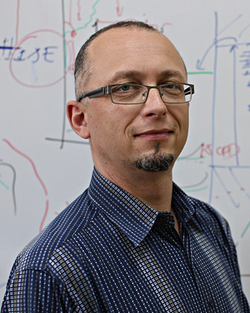 |
Novel information processing devices: A material Odyssey
Kacper Pilarczyka, Ewelina Wlaźlaka, Maria Lisa, Agnieszka Podborska, Konrad Szaciłowskia
Along with photocatalytic properties and applications in solar energy harvesting, wide band gap semiconductors offer a universal and versatile platform for construction of unconventional information processing devices. Here we present an overview of different materials and formal approaches towards information processing in optoelectronic systems based on nanostructured and molecular materials. |
|

